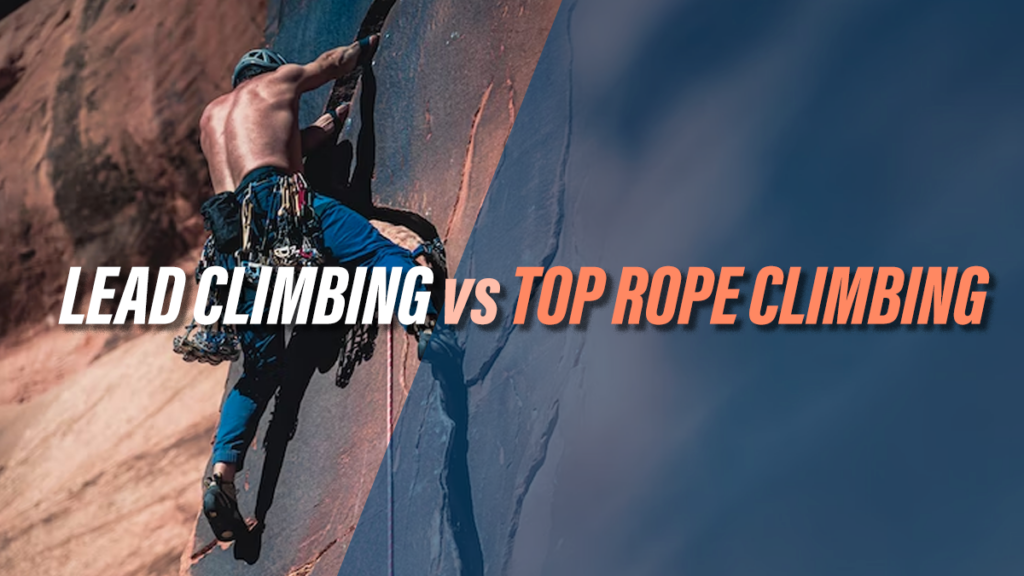Lead climbing and top rope climbing are the two most common types of roped climbing and the two you will usually find in most commercial climbing gyms. Let’s explore each term and why you might choose to lead versus top rope.
What is Top Rope Climbing?
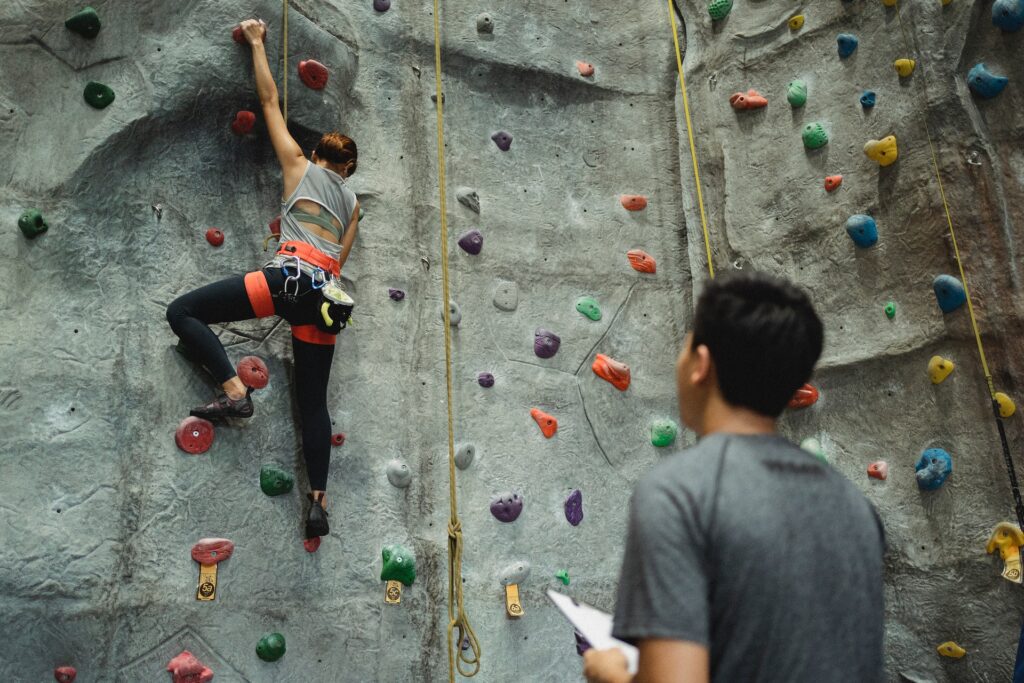
The top rope secures your rope to the top of the climb or wall (hence the name, top rope). Often, these anchors are permanent (or fixed), so with a tied knot and a belay, you are permanently attached or ‘protected’ when climbing. Most climbing gyms offer top rope walls and double-rap ropes around the anchor. Double wrapping provides a three/four to one climber-to-belayer weight ratio. Someone very light could belay a climber who weighs much more than them, which is why you might find belaying on a double-wrapped top rope more physically demanding than a single wrap; there is so much more friction in the system! To set up a top rope outside, an experienced climber will establish an anchor off of available, secure fixed points like trees, rocks, or metal bolts drilled into the rock. Outdoor anchors like this will be single-wrapped, reducing the climber-to-belayer weight ratio, so be aware of the lower friction!
What is Top Rope Belaying?
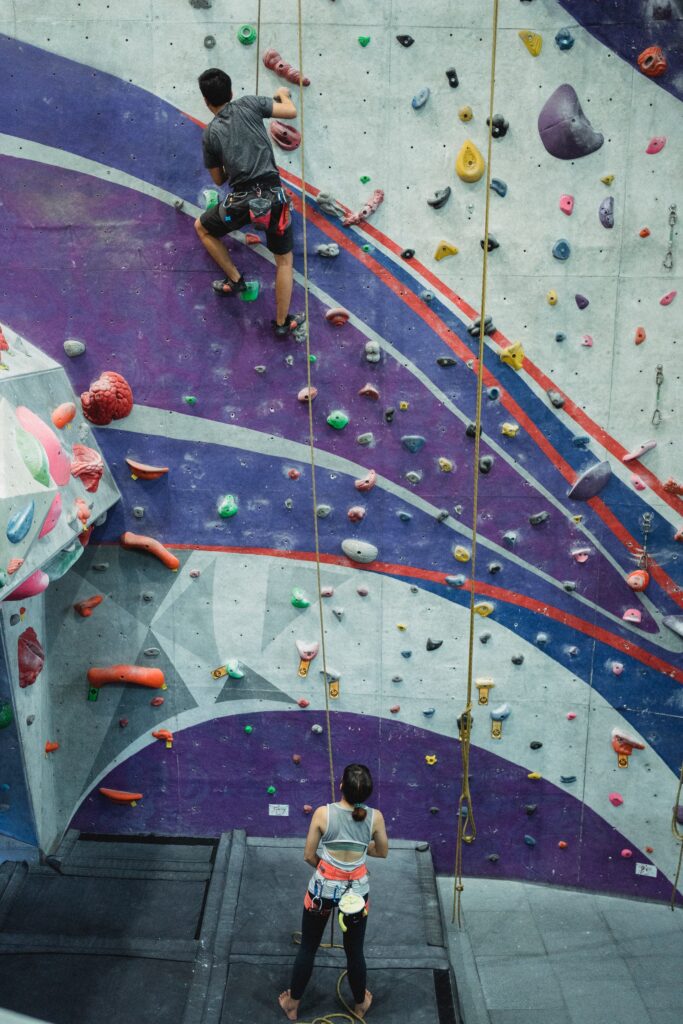
Top rope belaying is managing the rope for someone climbing the top rope from the other side of the rope, thus creating opposition. Since the anchor for the rope is at the top of the wall, the belayer takes up the excess slack (loose/extra cord) created as the climber ascends and can give rope as the climber is lowered. If the climber falls, they are caught immediately by the top rope belayer.
What is Lead Climbing (Sport Climbing or Trad[itional] Climbing)?
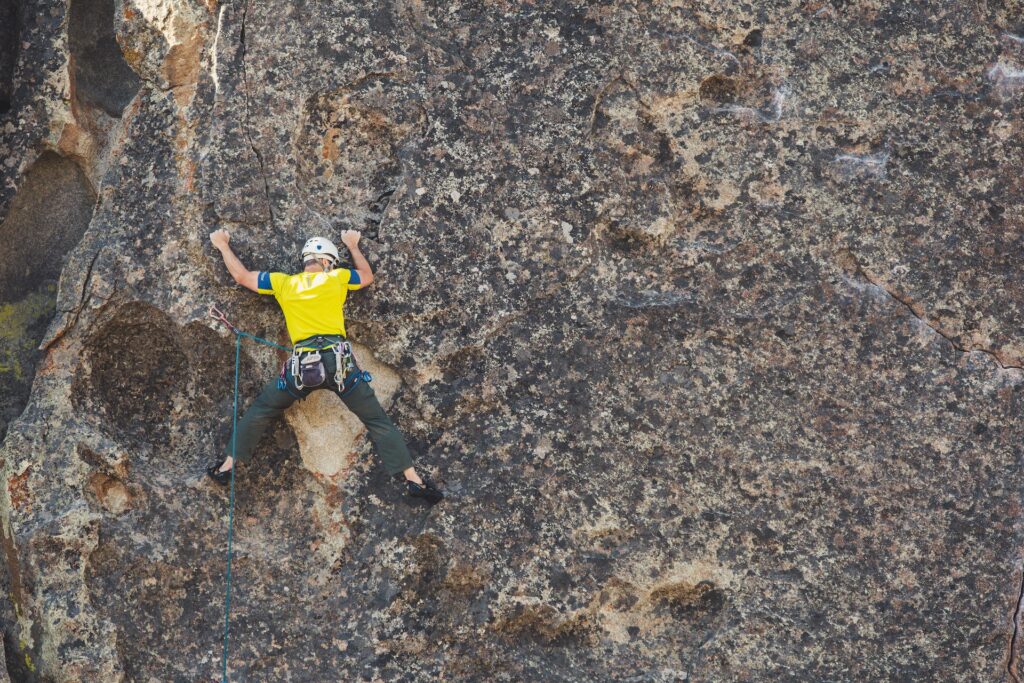
Lead climbers start with the rope attached only to each other (one on belay, one belaying), with the climber’s task to secure the rope at fixed points up the wall. So lead climbers have not one, but many fixed anchors! These fixed anchors have two primary components:
Bolt: stainless steel anchor drilled into the rock and set with super strong glue
Quickdraw: a thick webbing (dog bone) with a carabiner attached to each end. These can be permanently fixed or, more often, brought to the climb by the climber.
The quickdraw is attached to the bolt with one of the carabiners (quickdraws typically have designated ends for connecting to the wall), and the climber attaches the rope to the other side. Thus until the climber secures their rope into the first quickdraw, they are technically bouldering (aka climbing without any protection). Quickdraws are already attached to the wall in climbing gyms with a quick link (a more durable carabiner). The lead climber then attaches or clips their rope to each subsequent quickdraw as they progress up the wall. Indoors you’ll find a fixed anchor at the top. Outdoors, you’ll find a variety of anchor types (or none at all!), so it’s always good to scope out a guidebook as an expert and/or do your research.
The other type of climbing grouped under sport climbing is trad climbing, which is beyond this article’s scope. Just know that trad climbing takes incredible knowledge and experience and is only performed outside.
What is Lead Belaying?
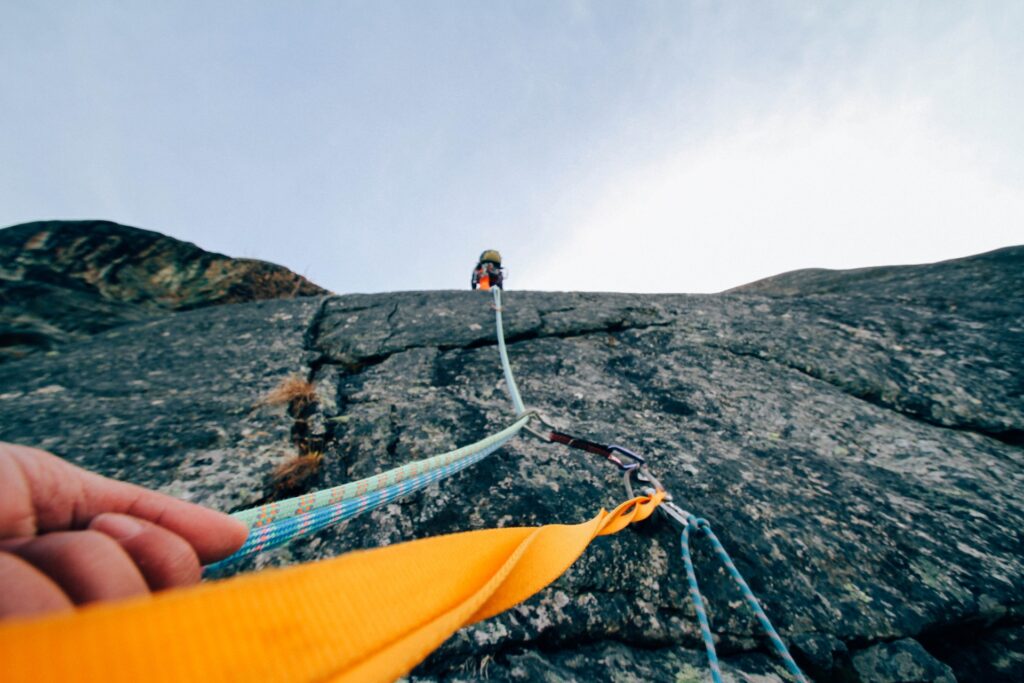
Unlike top rope belaying, where the belayer’s responsibility is to take up the excess slack in the rope, a lead belayer manages slack for the climber. Since the rope moves up the wall with the climber, the belayer must slide the rope through the belay device so the climber can advance or pull the cord back/take slack if needed. The lack of a double-wrapped top anchor also means less friction between the belayer and the climber. Thus you want to avoid or mitigate situations where a climber weighs much more or much less than the belayer and takes a fall. When climbers fall on lead belay, they can fall up to twice the distance between them and the last place they clipped in. So this can result in some big falls (or whippers)!
So What’s the Big Difference Between Lead and Top Rope Climbing?
If you’re an experienced top rope climber, why can’t you jump right into lead climbing? Relative to top roping, lead climbing is both technically demanding and mentally challenging–it can be scary! And not just for the climber. Take the actual climbing out of the equation, and lead belaying is arguably the more challenging position. That is because the mechanism/physics of the anchor points relative to the belayer and climber allow for potentially significant falls. The longer the fall, the more rope or slack between the climber and the belayer. Managing risk while lead climbing is a communications task for the belayer and the climber. The climber must know their comfort zone when tired or putting themselves into a risky position. The belayer must ensure communication/attention and know how to manage the rope and its position relative to the wall/first anchor. For a belayer, you are setting yourself up for the best possible outcome if your climber falls at any moment. The added level of attention, mechanics, and communication required between climber and belayer warrants the added experience before you begin leading climbing.
So what’s the next step? Start watching climbers at the gym! Note which ones are top-roping and lead belaying, and feel free to ask questions to climbers and staff. Use the internet for other videos and tutorials (note–you may see various lead climbing/belaying methods). When you’re ready to take the plunge, see if your local climbing gym offers a lead climbing class. The hands-on experience with a trained professional will guide you in a step-by-step learning process and is invaluable to the first-timer.
We hope you found some helpful and informational tidbits in the article. Let us know in the comments what’s holding you back from learning to lead climb/belay.
